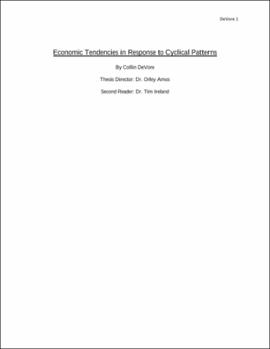| dc.description.abstract | This paper analyzes the concept of business cycles in regards to transportation changes, depressions, speculative bubbles, and social concepts and movements leading up to the event of major depressions. Upon analyzing this, the paper provides discussion regarding the likelihood of a depression in the year 2030 and the social, political, and economic events that are likely to occur preceding this depression. The depression is generally discussed in terms of incoming and outgoing dominant countries, and includes associated cyclical activity in Spain, France, England, and the United States during each of their terms of dominance. This dominance cycle allows for the possibility that the depression acts as a catalyst for social, political, and even national dominance to change. For the sake of simplicity, the current incoming and outgoing power are defined as China and the United States respectively. The occurrence of market bubbles are then analyzed, followed by an explanation of the research behind social and political cycles. Presidents and their associated ideas are discussed in order to compare the nation's leaders and to better understand elections and presidential platforms in terms of cyclical activity. In explaining this, an analysis of Hoover's presidency and the plans that Trump has made as president is given. Lastly, this paper discusses underlying assumptions implicit within social policies and research and the implications of those assumptions. An explanation of the difficulties involved in the writing and understanding of this paper and a final conclusion ends this paper and aggregates the information into a comprehensive theory. Within the context of this paper, the main business cycle that is discussed in terms of modeling all of this data is the 50 year Kondratiev Cycle, though associated cycles are also mentioned. In doing this, this paper makes a general structure of current and previous events in which to better analyze and evaluate trends over time. | |
